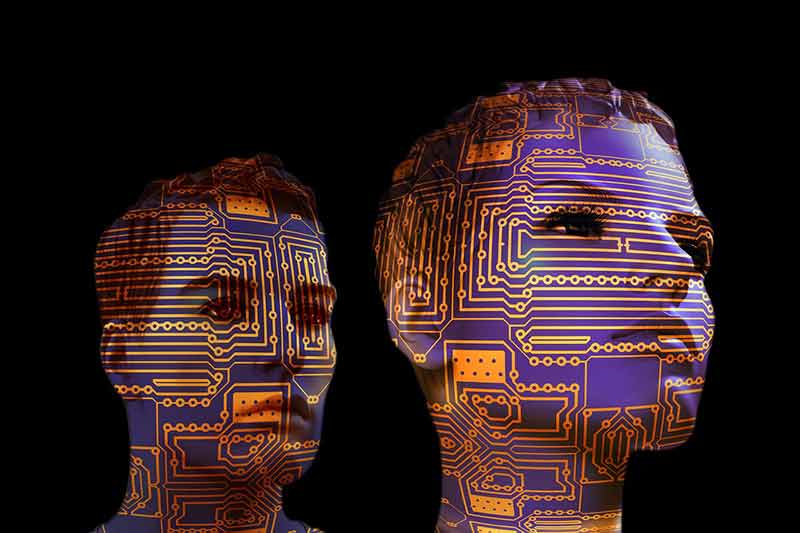
The Ministry of Industry and Information Technology (MIIT)
of China released
a three-year action plan (2018 -2020) on December 14 to drive development and
growth of artificial intelligence (AI) industry over the next three-years. (Content
based on Google translation of Word document in Chinese; click here
to download).
Earlier this year, the State Council of China laid
out an AI strategy, with the aim of growing the country’s core AI
industries to a scale of over 1 trillion Yuan (US$150 billion; a 100 times
increase over the 2016 number), driving related industries to exceed more than
10 trillion Yuan by 2030.
The plan seeks to leverage China’s advantages, but it also
recognises the current shortcomings. Data is essential for the development of
AI technology and China has access to huge volumes of data, due to its large
population base and rapid mobile Internet development.
The three-year Action Plan sets out targets, as it strives
to achieve major breakthroughs in basic research and a series of artificial
intelligence products by 2020, form an international competitive advantage in key
areas, deepen the integration of artificial intelligence and the real economy,
and integrate AI into manufacturing industries.
This is in line with the “Made in China 2025”
strategy. The MIIT will provide more policy support, including special funds,
talent cultivation and a better business environment.
The Plan aims for platforms of intelligent connected
vehicles to be reliable and safe enough to support highly automated driving by
2020. In addition, large-scale production and application of smart robots used
for household (cleaning, care of the elderly and disabled, medical
rehabilitation, children's education) and public services (such as fire rescue,
disaster relief) is expected to be achieved.
The Action Plan includes specific targets in areas such as smart
drones, facial recognition, AI-supported medical diagnosis, speech recognition
and translation.
For instance, by 2020:
- Intelligent consumer UAVs will have 3-axis mechanical
stabilisation unit with a precision of 0.005 degrees, along with having 360-degree
omnidirectional perception and obstacle avoidance and intelligent avoidance of specified
air traffic control areas - AI systems will be able to diagnose more than 95% of common diseases,
related to brain, lungs, eye, bone, cardiovascular system etc., with false
negative rate of less than 1% (not detecting disease when it is present) and
the false positive rate of less than 5% (Detecting disease when it is no there) - The effective detection rate of face recognition in complex
dynamic scenes would exceed 97% and the correct recognition rate exceeds 90% - The average accuracy rate of Chinese speech recognition will
reach 96%. - There will be a breakthrough in multilingual intelligent
mutual translation. The accuracy of Chinese-English translation and
English-Chinese translation will exceed 85%, and the accuracy rate of
intelligent translation between ethnic minority languages and Chinese would
be significantly improved. - The categories of smart home products will be significantly
enriched, the penetration rate of smart TV market will reach over 90%, and the
intelligent product level of security products will significantly increase.
The Government aims to accelerate the development and
application of high-precision, low-cost smart sensors, with focus on accuracy,
high reliability and low power consumption, and achieve breakthroughs in the development
of cloud and terminal neural network chips (network chips with performance of
128TFLOPS (16-bit floating point) and the energy efficiency ratio of more than
1TFLOPS /Watt would be developed).
The Government will promote the development of frameworks
for cloud-based training of AI systems and terminal applications, algorithms
libraries and toolsets.
It will also support open source development platforms,
foster growth of an open source community and encourage key leading enterprises
to build a new industrial ecosystem based on open source technologies
for software, hardware, data and applications.
By 2020, the open source
development platform for cloud training will support large-scale distributed
clusters, various hardware platforms, as well as algorithms, and lightweight,
modular and reliable open source development platforms for terminal
implementation.
A new generation of industrial robots with human-machine
coordination, natural interaction and autonomous learning is expected to be
mass-produced and deployed by 2020. The forming efficiency of additive
manufacturing equipment will be more than 450cm3 / h and the continuous working
time more than 240h. Intelligent sensor and control equipment integration will
be accomplished in the fields of machine tools, robotics, petrochemicals, rail
transit and others.
The Government will encourage discrete manufacturing
enterprises to network production equipment, based on application of machine
learning technology and processing of field data, online diagnosis of equipment,
real-time control of product quality and other functions. Process-oriented
manufacturing enterprises will be encouraged to adopt intelligent production
management for the entire process with appropriate security and implement
intelligent safety management. Man-machine collaboration will be enhanced through
improved cooperation between enterprises and R & D institutes.
Measures will also be rolled out to build industry clusters,
set up key laboratories and encourage data sharing.
The product development cycle is expected to be shortened by
20%. Smart factories will reduce the rate of defective products by 10% and bring
down energy consumption by 10%.
To accomplish all this, through Government support, by 2020:
- The amount of public training data such as basic speech,
video images and text dialogues will be greatly increased, bringing together
industry-specific data on a wide range of industries such as healthcare,
finance and transportation to support entrepreneurial innovation. - Artificial intelligence industry standards will be established,
and an IP service platform will be set up - Broadband access in over 90% of the country will meet the
application needs of the AI industry - An artificial intelligence network security system will be
established, with situational awareness threat information sharing and
emergency response systems in place
















